本文由Hiroshi Nakamura & NAP授权mooool发表,欢迎转发,禁止以mooool编辑版本转载。
Thanks Hiroshi Nakamura & NAP for authorizing the publication of the project on mooool, Text description provided by Hiroshi Nakamura & NAP.
Hiroshi Nakamura & NAP:项目位于著名的避暑胜地枥木县那须,穿过田野和林地,在一片混交树林中的森林小径里。房子的主人是一对已婚夫妇,喜欢在周末享受有机农作,他们希望尽可能多地保留原有环境,希望能够住在被树木环绕的地方。设计师规避了体量巨大的建筑,也规避了大规模的砍伐,把房屋建在坡地上仅有的几个平地上,就好像把它们缝在一起一样。
Hiroshi Nakamura & NAP:The site is located in Nasu, Tochigi Prefecture, a well-known summer resort. Passing through fields and woodlands, the site lies along the forest path in a grove of mixed trees. Our client is a married couple that enjoys organic farming on the weekends, and their wish was to reserve as much of the environment as possible and to live in the surrounding woods. We avoided large-scale construction and a majority of felling to build the rooms on the few remaining flat surfaces of the sloping ground, as if sewing them together.
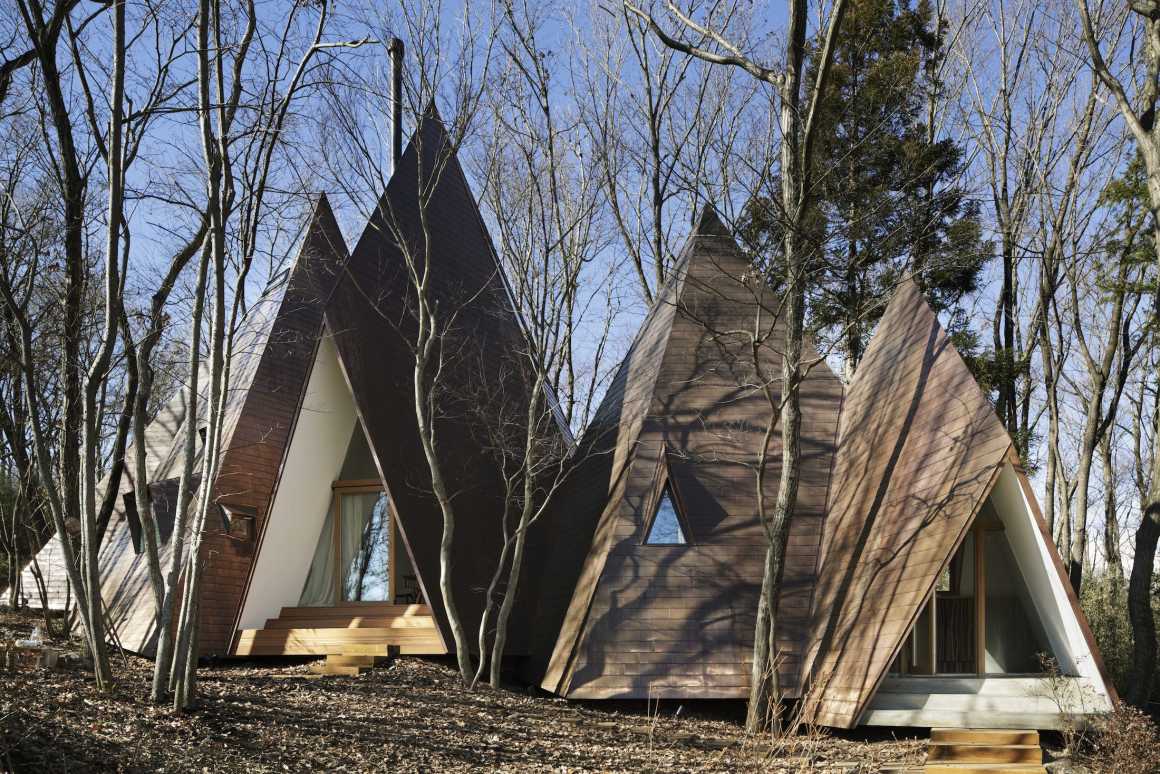
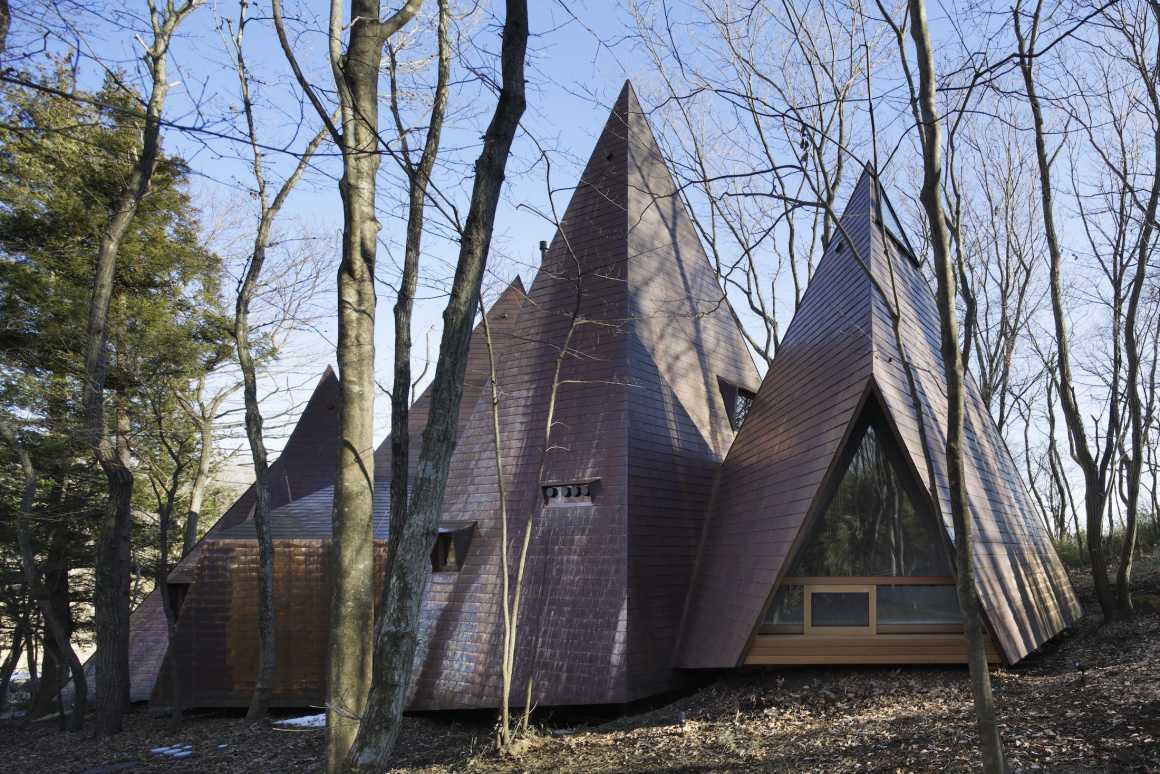
▼三角形高窗 The triangular ceiling-high window
©Koji FUJII/ Nacasa & Partners Inc.
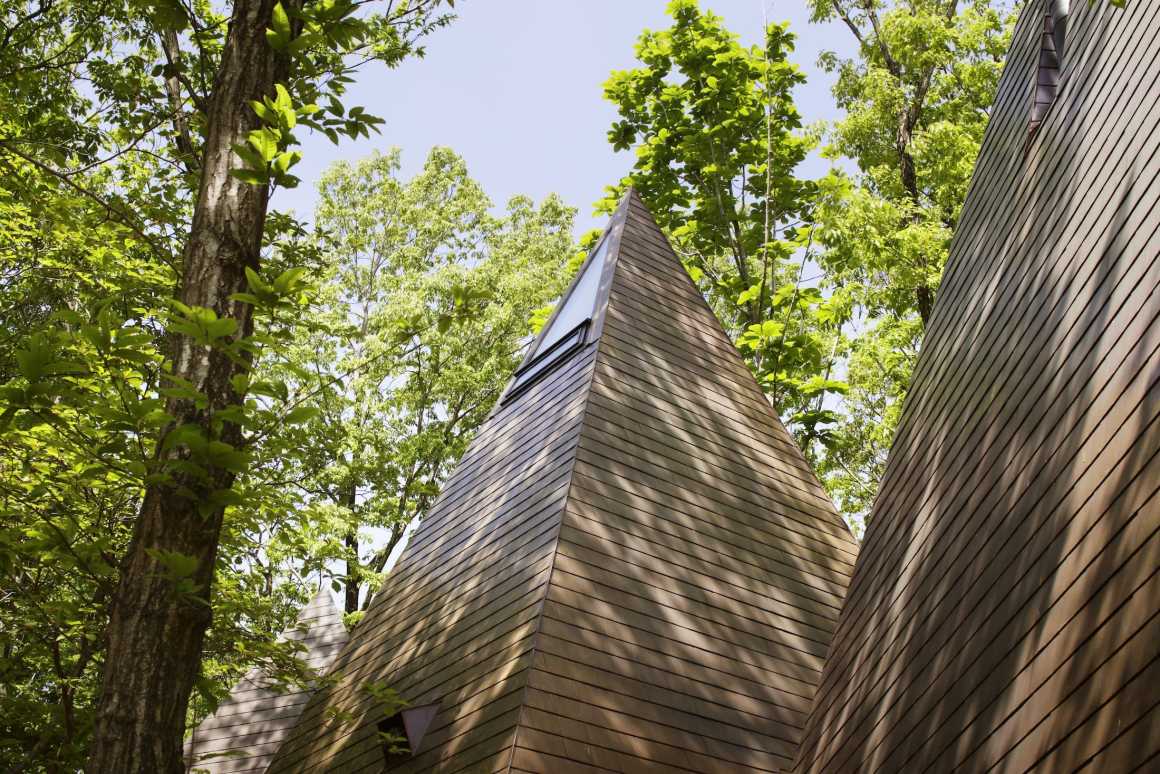
由于该场地位于茂密的树林中,设计师想通过高窗让阳光直射到房子里,但这会导致空间变得太大,空调运作成本很高,建筑外墙会撞到树枝上。因此,设计师消除了不必要的空间。首先,根据人的活动方式降低天花板。此外,新的建筑形式与纵向展开的树枝相协调,这使得帐篷形状的建筑只有三分之一的体量。
Since the site is located in the midst of dense woods, we came up with the idea of having a high ceiling to let direct sunlight in the house. However, this would result in the space becoming too large, cost a lot to run the air-conditioning and the exterior walls would bump into the branches. Therefore, we eliminated unnecessary space. First, we cut down the upper space diagonally to make the ceiling lower based on the way people move. In addition, the new form matches the tree branches that spread out radially. This resulted in a tent-shaped house with only one third of the volumes.
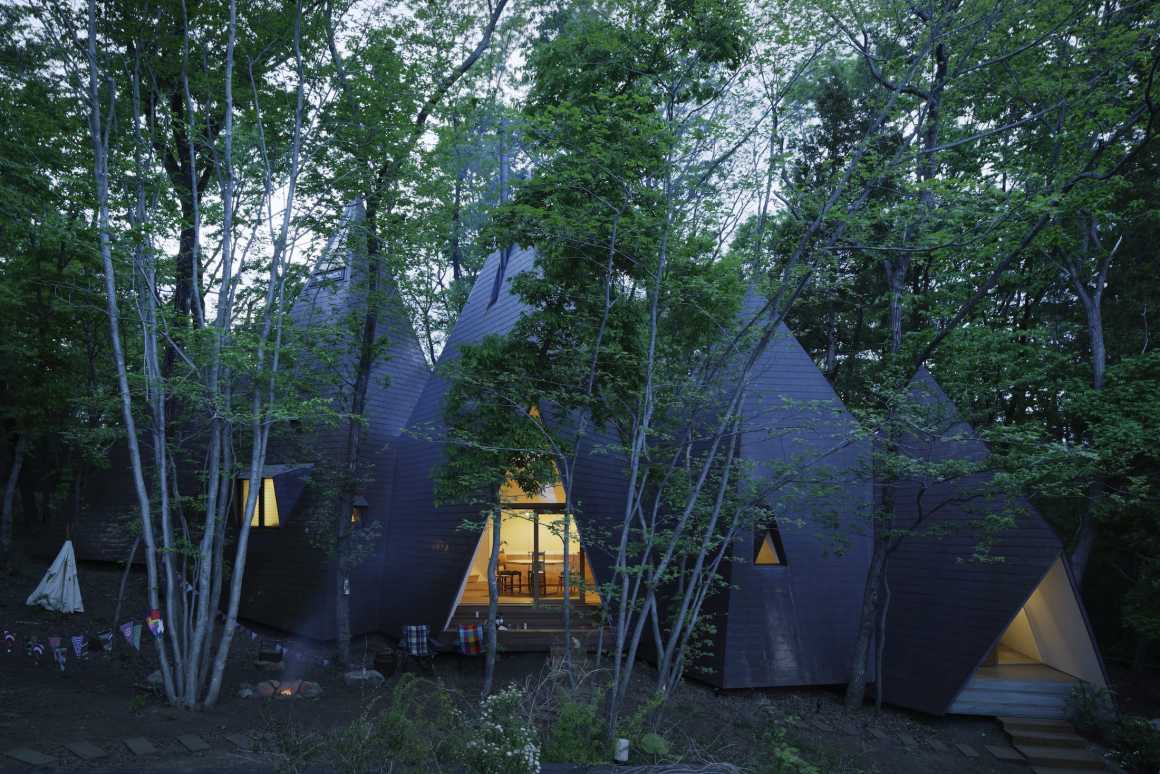

夜晚,月光是唯一的自然光源,黑暗使森林陷入了沉默。有时能微弱的听到野生动物在活动,然后你会在黑夜中发现一所温暖的、柔和的房子。它类似于縄文人(古代日本人)和美洲原住民居住的原始空间。房子的结构开创了一种密切互动的生活方式,一家人面对面地坐在低矮的墙边,当家人聚集在中心时,中间放一堆火、一盏灯或一张桌子便可以展开对话。建筑对人们的习惯产生了影响,它加强了家庭的联系和纽带。
At night, the moonlight becomes the only natural illumination and the dark forest falls into silence. At times, the presence of wild animals can be heard ever so faintly. In the darkness of the night, you will find a house filled with warm and gentle looks. It is similar to primitive spaces seen in the houses of the Jomon People (Ancient Japanese) and Native Americans. The structure of the house initiated a lifestyle with close interaction, because the family sat along the low wall facing each other. A fire, a light or a table was set in the middle to initiate conversation as the family gathered around the center. The architecture has had an influence on people’s habits and it strengthened the connection and bond of the family.
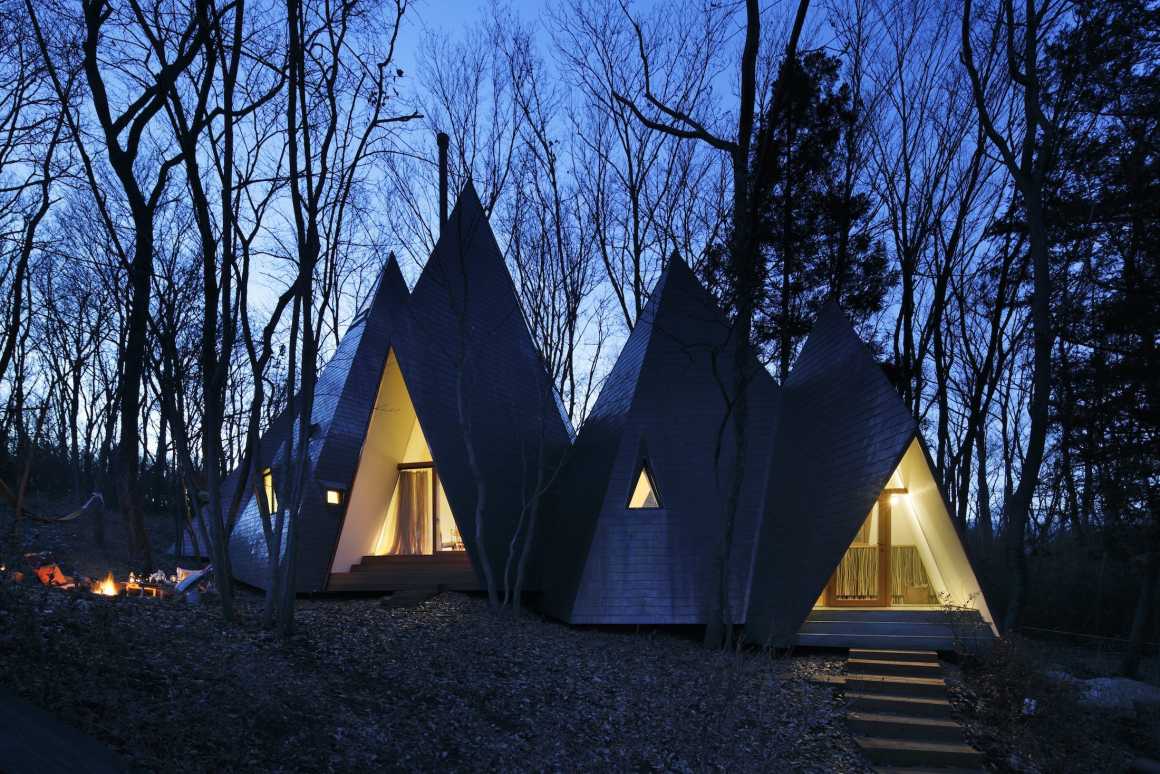
“尖顶帽”建筑悬臂略高于地面,这样是为了防止昆虫、湿气和雪花进入房屋。 窗户都是双层玻璃窗,以确保房屋空间是气密的,并且有良好的隔热性能。设计师利用地暖和地坑,在地板下安装了壁炉和空调。
The “pointy-hat” building cantilevers slightly above ground in order to prevent insects, humidity and fallen snow entering the house. The windows are all double glazed in order to ensure that the tall spaces are airtight and well insulated. We installed the fireplace and the air-conditioning underfloor by making use of the floor heating and the pit.


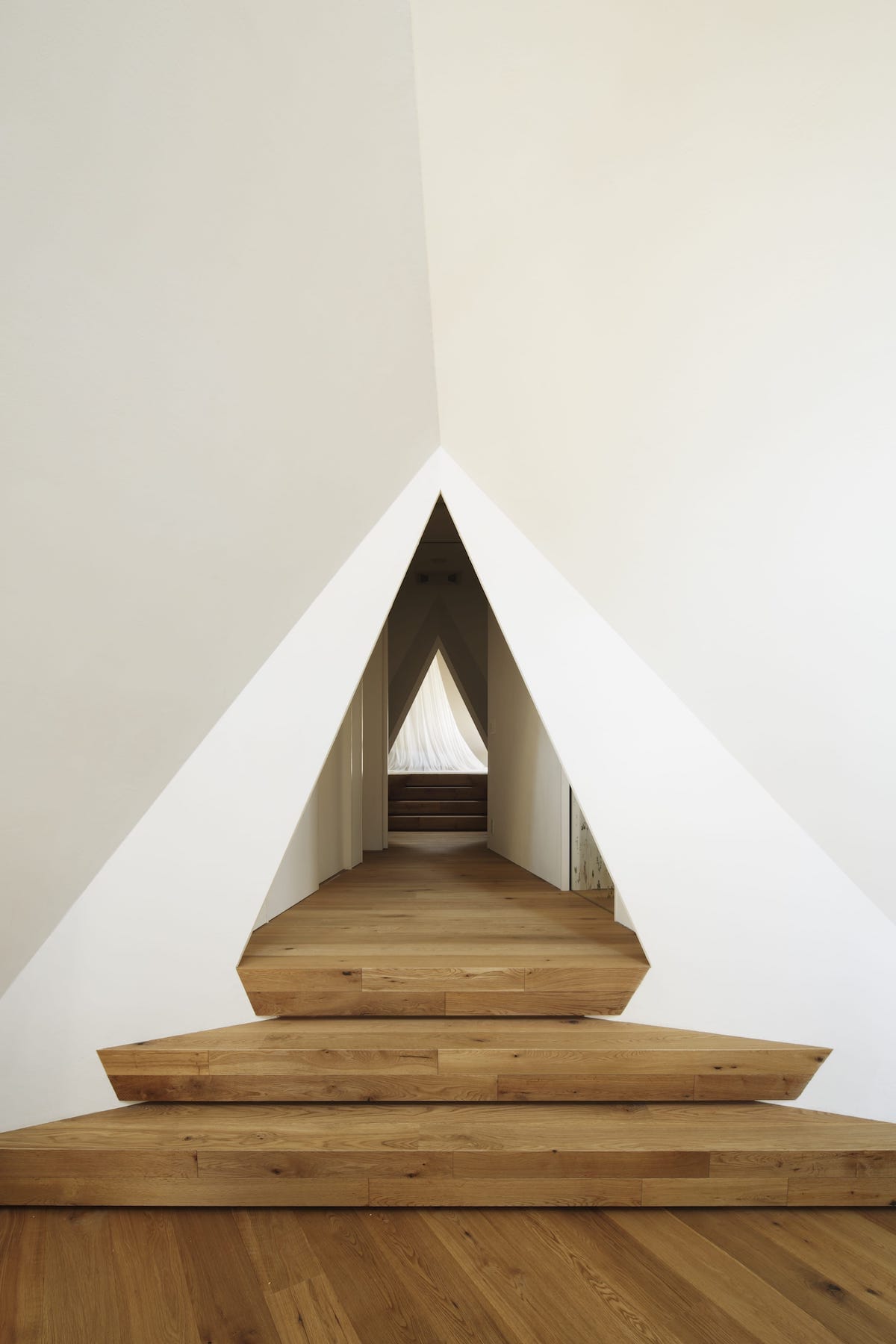
虽然最高的天花板有8m,但平均高度是标准的2.6m。其实人们并不能靠墙站直,所以设计师把空间变成了睡觉和坐着的地方。天花板像帐篷一样下降,可以创造一个温暖的居住空间,与树木融为一体。你会感受到家一般的温暖环绕在你的身边。
Although the highest ceiling is 8m, the average ceiling height dates a standard 2,6m. As a matter of fact, people cannot stand upright close to the walls, so we simply turned the spaces into sleeping and sitting areas. The ceiling descends like a tent and enables the creation of a warm living space that mingles with the trees. You will feel the warmhearted embrace of the house around you.
©Koji FUJII/ Nacasa & Partners Inc.
©Koji FUJII/ Nacasa & Partners Inc.
夏季,温暖的空气聚集在顶部,通过顶部的侧窗散出。冬季,上部的暖空气将会被吸入内部,地暖也会释放暖气,这样就能营造出一个非常舒适的居住环境。
During summer, warm air gathers at the top and escapes through the top light side window. During winter, warm air at the upper part will be drawn in and blown out at floor level. This way, we are able to create a very comfortable air environment.

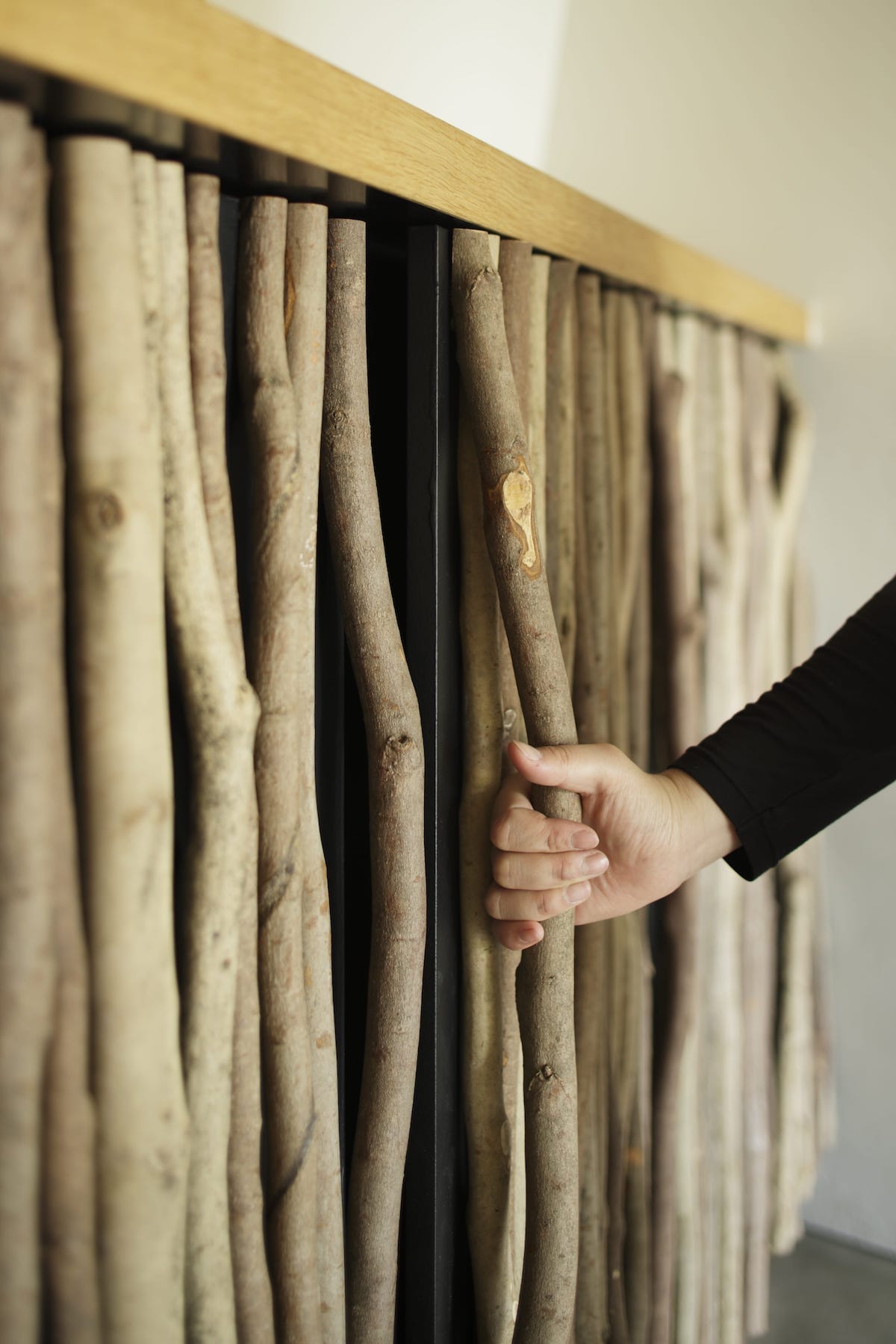
阿克比、堇菜、银莲花、天竺葵、云雀——压花玻璃门中的野花都来自于周围的树林。设计师的想法是找到一种新的方式来反映自然的馈赠,而不仅仅是在样本或者图书中出现。通过将压好的花用树脂薄膜夹在两个4毫米厚的玻璃中间,在真空中烧制而成。设计师在玻璃里放置了防紫外线膜,以防止花朵脱色。
Akebi, viola, anemone, geranium, larkspur – the wild flowers found in the pressed flower glass all came from the surrounding woods. Our idea was to find a new way to reflect the blessings of nature, not just in the context of samples or picture books. We manufactured the glass by sandwiching the pressed flowers in resin films between two 4mm thick glasses and firing them in vacuum. We put films for ultraviolet protection in the glass to protect the flowers from decolorization.
▼压花玻璃门 Pressed flower glass door

▼一层平面图 First Floor Plan
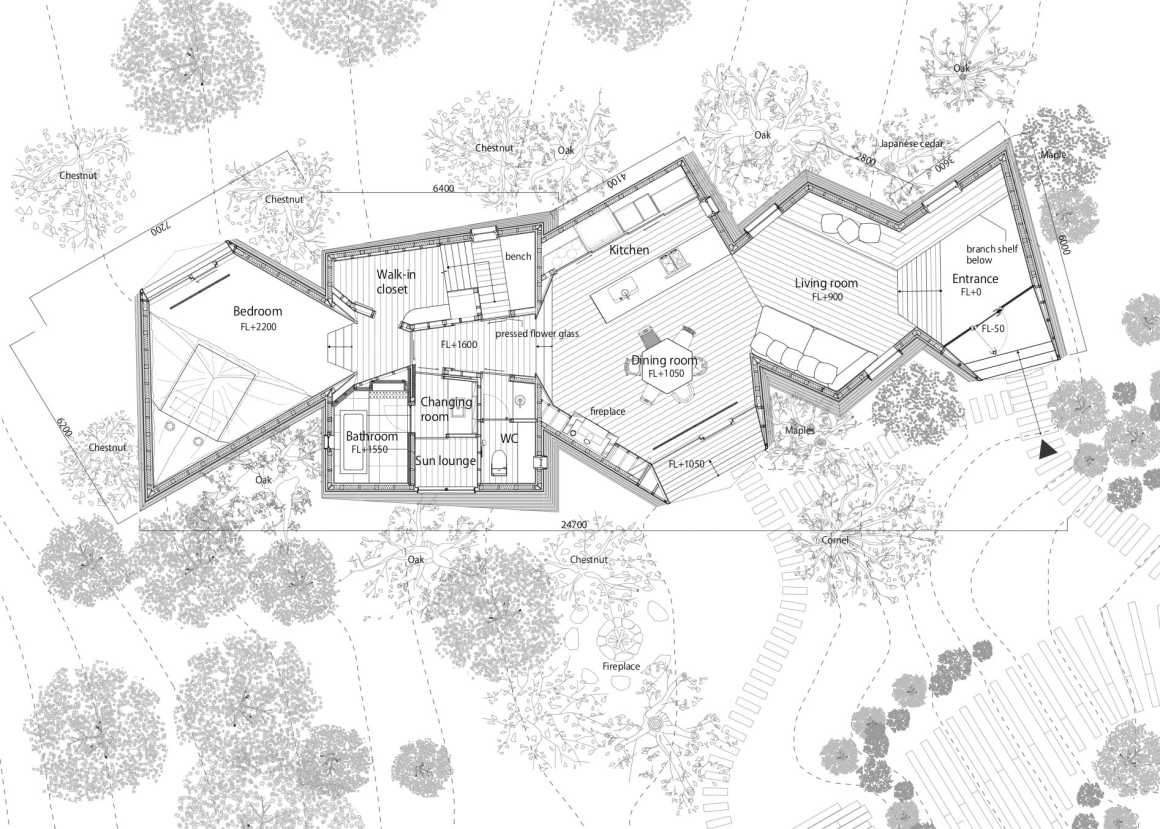
▼剖面图 Section

地址: 日本东京
主要用途: 私人住宅
建筑设计: Hiroshi Nakamura & NAP
摄影: Koji FUJII/ Nacasa & Partners Inc.
场地面积: 1,443 平方米
总建筑面积: 186平方米
结构: 木结构
Building site: Tochigi, Japan
Principal use: Private House
Architectural design: Hiroshi Nakamura & NAP
Photography: Koji FUJII/ Nacasa & Partners Inc.
Site area: 1,443m2
Total floor area: 186m2
Structure: Timber Structure
更多 Read more about: Hiroshi Nakamura & NAP,Nacasa & Partners Inc.




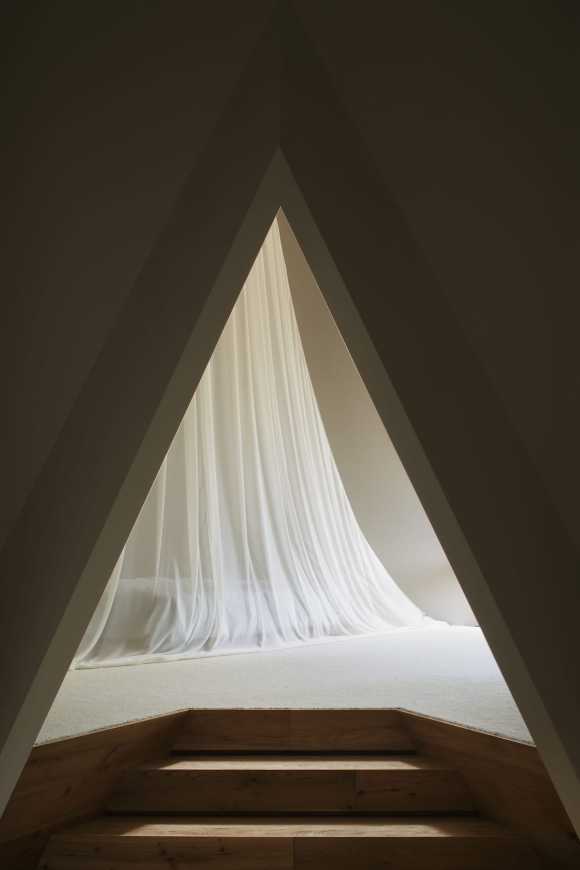





0 Comments